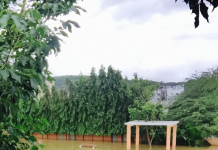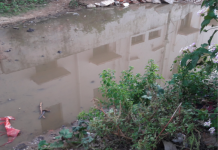Effective communication is one of the most engaging ways to get ourselves involved in social problem solving. Let’s say, you are writing a letter to the corporation about the stinky pile of garbage at the end of your street, or speaking about the need for segregating waste to your neighbours — They all need you to communicate your thoughts and emotions in a compelling manner. There couldn’t be no better way to imbibe this skill than by learning to tell stories. When photographs accompany your stories, we have an incredibly added advantage to engage with the audience, after all, “A picture is worth a thousand words.”
Imagine this. I am going to tell you a short story about Chilika Lake, the second largest lagoon in the world. It is surrounded by plenty of lush green hills. Around a hundred and fifty-thousand fisher folks are dependant on this lake for their very living. Along with these millions are of migratory birds depend on this lake too. This makes Chilika the largest wintering ground for migratory birds in the Indian sub-continent.
Now, you have heard the story. Click here to see if this picture depicts the story I just told.

This is the power of visual storytelling. Thousands of photographers have been practising this for many decades, carefully crafting every frame that tells a story. We need to learn certain techniques to imbibe this craft. It is important in today’s scenario especially because, the world is saturated with photographs. Let’s begin.
The most crucial step is to ‘Pre-visualize’ the photograph in your mind before you take the camera out.
“Pre-visualization is like the first few minutes we take to think before we are asked to write a short story. Don’t we think about the genre, whether it’s a comedy or a thriller? Don’t we create a coherent structure in our mind? It is the same with our camera too.”
Let’s look at an example for pre-visualization.
You are walking out of your house, and you see a spider in its web. You take your camera, stand next to the spider, ‘Click Click’, and you leave. This is one way of using your camera. Another way is, you think for a minute about how such little creatures survive in the city amidst the huge concrete structures. That’s when an idea strikes you. So, you go behind the spider web to see if you can photograph the spider with the house in the background.
Now, look at these two pictures and see which conveys the story better.


Have a point of reference in the frame before clicking a photograph.
“Including a point of reference in your scene will add life to your image. Without it, the photograph will look dead.”
Below are two photographs from the same location that are obvious examples of point of reference.


Let is look at another example.
A big residential community with over 800 apartments gets drinking water from tanker lorries. See the two photographs below, and tell us which evokes this gravity of this problem.


The lorry in the second image not only provides a point of reference, it also adds to an otherwise dead frame. Of course, a few people in the frame would have been much better!
Keep the focus on the area in your scene where you want your viewer’s attention to go. This will give you a very sharp image. If its people or an animal, focus on their eye.


Be prepared to capture a scene.
“Let’s say, a biker crosses on the wrong side of the road, or, a pedestrian walks very close to an open drain, or, an irresponsible citizen throwing garbage on the road – All these can be captured in your camera, which can later be used to build a story around your social problem. So, always be alert, and be prepared to capture a scene.”
Here is a classic example of this. I was in a temple in Southern India, where there were a lot of Bonnet macaques (A species of monkey). Fortunately, there were no people in the temple, and it was desolated. That when a thought struck me. I knew that, these curious macaques will peep into one of holes in the temple door to check out who has come.

Bend. Go eye level. Look for multiple angles.
I often see photographers, even the ones with smartphones, who don’t bend an inch while taking a photograph. This, let me tell you, is a wrong approach. If you move around, you will find interesting angles. A simple move of go eye level to photograph your scene, or you subject, will make an interesting photo.
Here is a photograph of me photographing a crab. We can’t make a crab look interesting when we stand a click a photo from above. When we bend down, and go to crabs level, it becomes interesting.


Though there are numerous tips I would like to share with you, these are the five basic ones. Pre-visualize, look for a point of reference, focus on the eye, be prepared and go eye level. If you don’t have a camera, you can use your smartphone to begin practising these tips.
Remember that, photography is a powerful medium to communicate social problems to the outside world. Its also an interesting way to understand social problems around you. You can follow these techniques while you are on a ‘Recce’ or, you could step out with your camera and walk in your neighbourhood. Both these activities will surprise you with the mounting number of social problems that prevail around us. Build a story around them and learn to solve them through Karthavyam! All the best!






